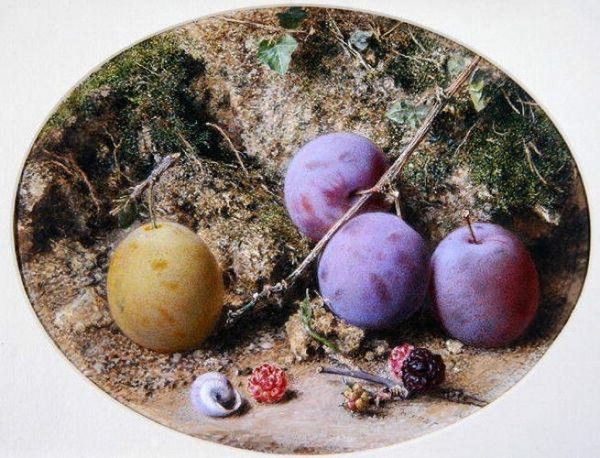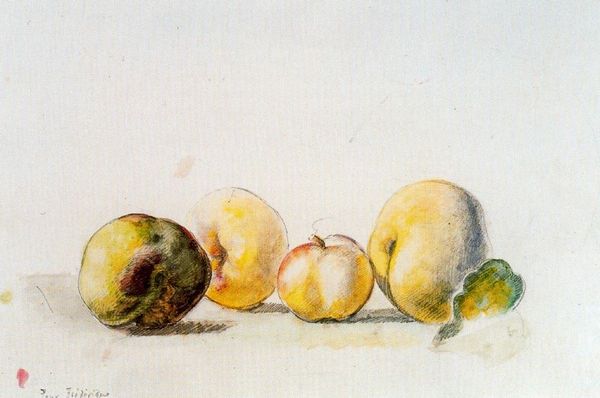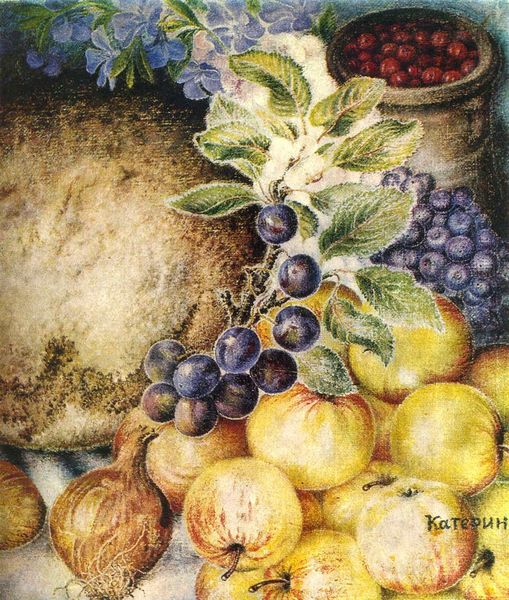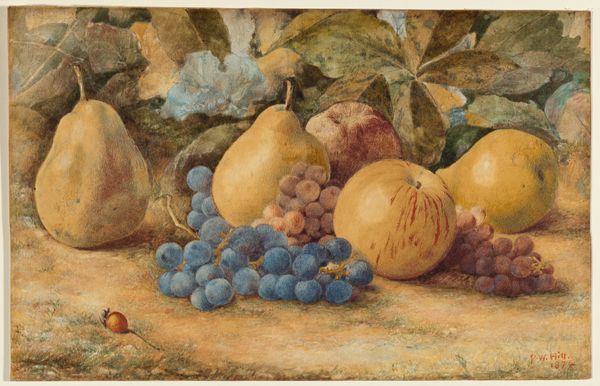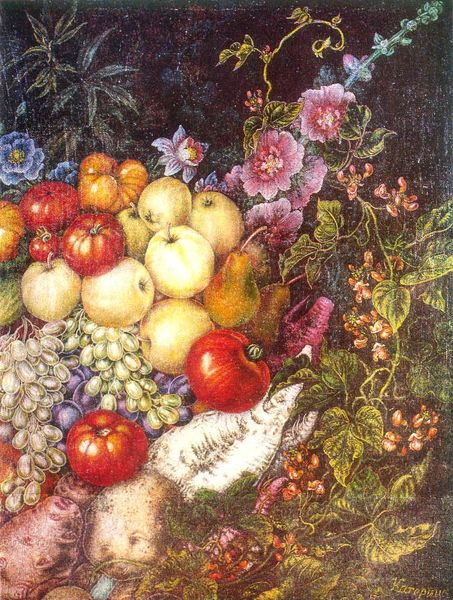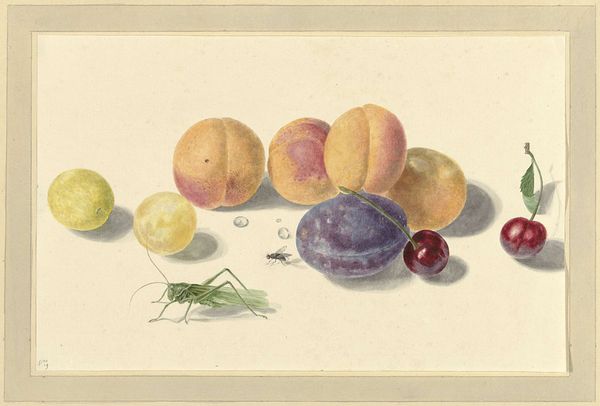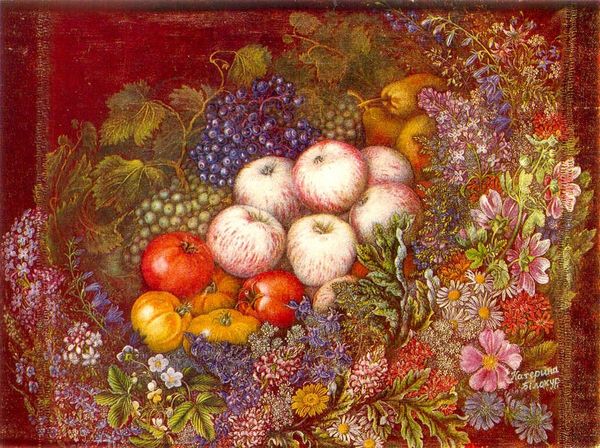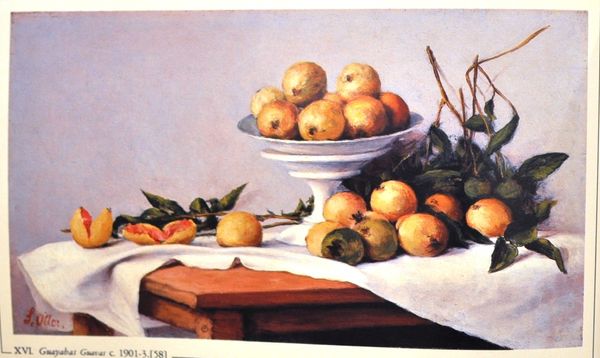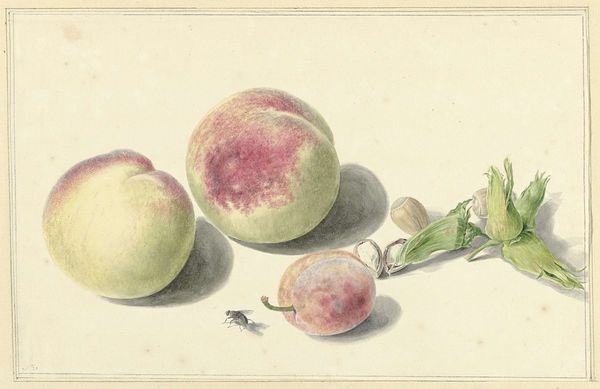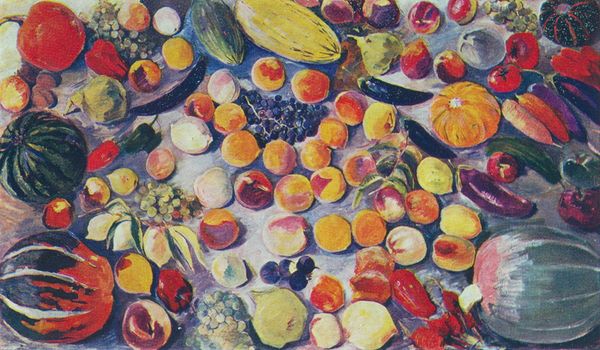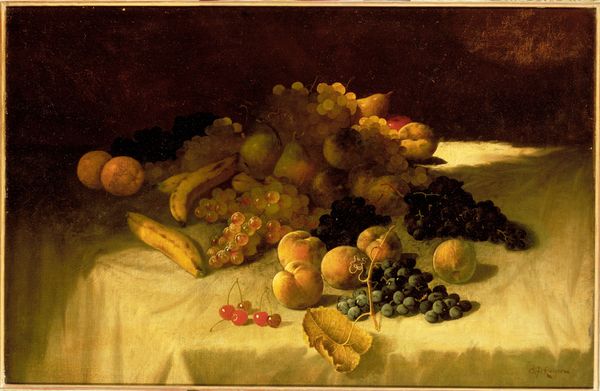
watercolor
#
oil painting
#
watercolor
#
watercolour illustration
#
pre-raphaelites
#
watercolor
#
realism
Copyright: Public domain
Editor: Here we have William Henry Hunt’s “Apricots and Woodnuts,” created around 1860, using watercolor. It’s incredibly realistic. It feels like I could reach out and grab the fruit. How would you interpret this work? Curator: Let's think about this watercolor in the context of Victorian consumerism. Hunt meticulously renders these apricots, plums and nuts – these desirable goods. But how are these goods produced, transported, and consumed? The very act of rendering them with such precision transforms everyday food items into luxury commodities. Editor: So, you’re saying that it is related to the rise of consumer culture at the time? Curator: Precisely. Consider the Pre-Raphaelite movement Hunt belonged to. They were interested in realism and in elevating craftsmanship. But their patrons were part of the emerging middle class, eager to display their wealth and refinement through art that depicted the finer things in life. How does the medium, watercolor, affect our reading of the objects presented here? Editor: Watercolor seems like a paradox—it feels accessible, yet demanding. It can quickly capture things from life, but requires expertise. Curator: Exactly. And this tension, between accessibility and luxury, mirrors the social dynamics of the time. The artwork almost masks its means of production. We consume the image without necessarily considering the labor, skill, and cost involved in its making and subsequent ownership. Editor: I see, so even in this seemingly simple still life, there is so much more at play about the means of art production, the role of labour and society. Curator: Yes, and it invites us to think about how we value art and the goods it depicts. The means, materials, labour of the watercolor technique mirrors back at consumerism’s rise.
Comments
No comments
Be the first to comment and join the conversation on the ultimate creative platform.
